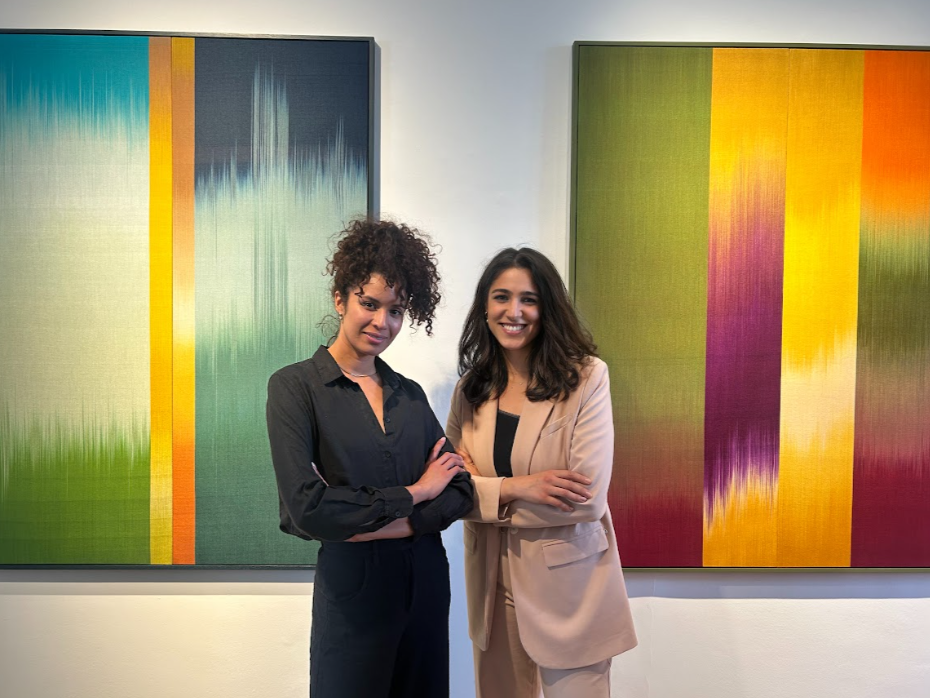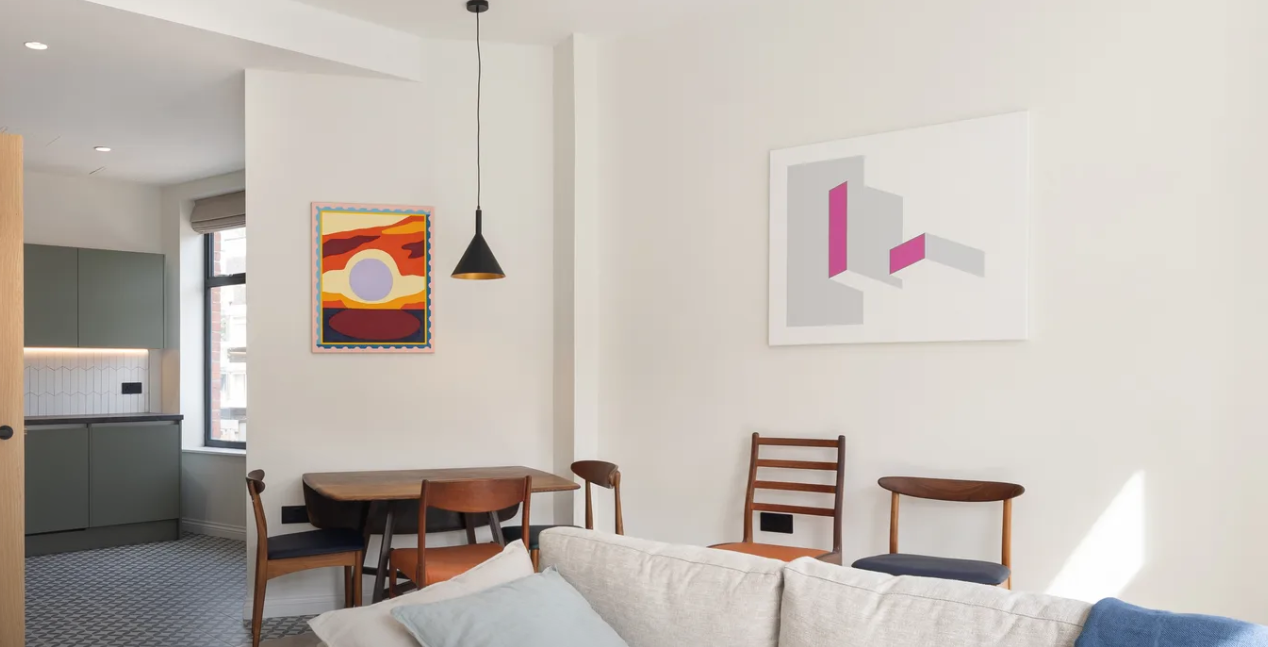After meeting during the 12-week Art Business Professional Certificate course at Sotheby's Institute, Adriana Gomez and Francesca Maria Inglima launched MURO—a business that allows individuals to hire art pieces that would otherwise remain in storage. We spoke to the duo about their innovative approach to art sharing and their vision for the future of art accessibility and sustainability.
 What was the initial inspiration behind MURO, and how did you identify the need for a dynamic art platform?
What was the initial inspiration behind MURO, and how did you identify the need for a dynamic art platform?
We launched MURO after our final project on the 12-week Art Business course at Sotheby’s Institute last year. MURO is an innovative high-end art-sharing platform based in London and active globally. We provide exclusive access to private art collections through rental, bringing gallery and museum-level pieces to new commercial spaces and audiences.
Our mission goes beyond decorative art: we aim to make art history, luxury, and cultural capital more accessible and democratic. Renting art generates income for art collectors while saving storage costs and provides visibility for artworks otherwise hidden away in a basement for years. Sustainability is at the forefront of our proposition, as the matching between lenders and borrowers is done locally, minimizing transport impact.
We took inspiration from the success of car-sharing apps, as well as luxury clothing and accessories rental websites, and decided to bring the sharing economy to the high-end art market through a centralized, pure-play, digital marketplace.
What are some of the biggest challenges you’ve faced in launching and growing MURO?
The biggest challenge for art rentals is certainly logistics. Moving, installing, and providing insurance for quality art in transit is neither easy nor cheap. It requires skilled labor, lots of coordination among the involved parties, and smooth procedures to ensure a pleasant customer experience. These are the reasons why galleries do not tend to offer this service on a scalable basis. By specializing in high-end art rentals, we are able to partner with trusted logistics and insurance providers, master the process in a more efficient way, and even offer traditional art market participants the possibility to outsource this service to MURO.
What were the key elements of the 12-week Certificate course that influenced your decision to study with Sotheby’s Institute?
The insights from other experts during the course have influenced our current perspective on art. Consequently, we aim to revolutionize the experience of engaging with art and joining the conversation. This led to the creation of MURO, a real business with a museum-level inventory of art sourced from various collections, designed to reshape and revolutionize how people enjoy art.
How did the 12-week Certificate course at Sotheby’s Institute equip you with the tools and knowledge to navigate the art industry? What were some of the most valuable aspects of the curriculum?
The most valuable aspect of the curriculum was the incredible access to professionals from every aspect of the art market. Hearing from them directly about the challenges and projects they are dealing with was an invaluable tool to understand the evolving dynamics of the sector and have a better understanding of where opportunities lie. One recurring takeaway that influenced the idea behind MURO was the topic of engaging younger generations in the art market.
The course was also very helpful in laying the foundations of art valuation and learning what determines the success of an artist, as well as identifying the key players driving the direction of the market. This was particularly helpful for someone, like Francesca, coming from a different sector. The mentoring we received for our final project from a senior panel including Melanie Gerlis—Financial Times art market columnist, Anders Petterson—founder of ArtTactic, as well as dealers, professors, and curators was essential to shape what MURO is today and encourage us to take this initiative forward in real life after the course. Finally, the network of students within the class was an incredible way to rethink the landscape of the next generation of art business.
How did the balance between in-classroom teaching and on-site visits enhance your learning experience in the course? Did these experiences influence the development of MURO?
On-site visits to galleries, museums, fairs, and the auction house were key to getting a hands-on experience of the different players in the art market. We attended the course during Frieze season, which meant tons of openings, shows, and initiatives provided us with countless learning opportunities, always guided by the wise commentary of our course leader Jeffrey Boloten. The day trip to the Turner Contemporary museum in cheerful Margate was a foundational moment for MURO: the team was formed then, during a detour from the rest of the class, visiting an artsy hotel run by rock band The Libertines.
What advice would you give to someone looking to combine their passion for art with entrepreneurship?
This might sound cliché, but my advice is to be patient. If patience isn't your strong suit, you might want to consider another career. The art world is unpredictable, and entrepreneurship is a tough journey, especially when you're self-made, need to raise capital, and don't have partners. Francesca and I were fortunate to meet at Sotheby's Institute of Art, which made a significant difference. There are countless challenges, but today we have more access to information and are witnessing a global transformation. We are taking that advantage and must adapt, especially as entrepreneurs, because we face many obstacles. Yet, we do it all for the love of art.
